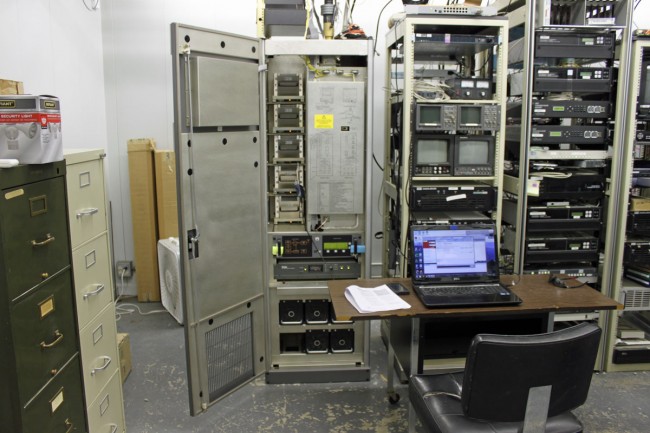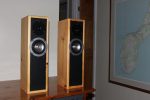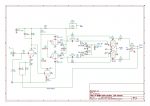The original V series Nautel transmitters have required a couple of firmware upgrades in some cases.

The first was for the controller to add a little bit of bias to the PAs during analog operation. The second one I have had to do is to the PA modules themselves which were to keep the power supplies from shutting off during re-transfer from Generator power to commercial power.
I have done several of these and once you get the hang of it, it only takes a few minutes to complete. Still, I remember when transmitters didn’t have firmware. The low voltage control circuits were either 120 or 240 VAC with big relays and contactors that loudly confirmed their closure before any meters began to move.
Regarding Nautel transmitters in general; the newer models are not the same rugged, reliable designs that were common in the past. We have AM ND series transmitters that have been on the air for 20 years without a single failure. The models rolling out of the factory these days often have switching power supplies fail without reason or warning and RF pallets that are fragile things. Ah well, I suppose all things are cyclical.






Switching Power Supplies seem to comprise the majority of transmitter problems I’ve dealt with in the past decade or two. Nearly every transmitter manufacturer that has used them in their rigs has been plagued by failures. ( BE, Harris, Nautel etc) Why or why do they continue to use them ? The disadvantages seem to offset any advantage they may provide.
“why do they continue to use them ?”
Because they’re cheap.
I’d prefer my transmitters NOT have switching supplies, touch screens or any other failure-prone components that will be impossible to source in ten years.
Seems I’m losing that battle.
Well that’s a shame that Nautel aren’t maintaining ruggedness. I used to carry out routine maintenance on an Ampfet 10, installed in hot & dirty conditions. Some PA modules would fail in the Summer; usually just a MOSFET and occasionally a protection diode. The modules were strongly built and easy to work on. We had no psu failures during my tenure. The only part of the Ampfet 10 I thought was poorly designed was the air filter assembly: filters held in by thin, bendy chicken wire.
In theory, the switching supplies are cheap enough you can have a spare on the shelf — in practice, well, budgets are thinner and thinner….
I have a twenty five year old Nautel AMPFET-10 as my “B” Transmitter on one of my stations. (In the old days we would have called it an “alternate main”). For its first 12 years the transmitter ran as the station’s main (with a Gates BC-5H as backup). We now run the AMPFET-10 on the air for one week every month. It has never had a failure in its entire history. It doesn’t get much better than that!
On the other hand, my “A” transmitter – a 13 year old Harris DX-10 – requires a lot of TLC, and always has. In fact, this is really the second DX-10 we have had. Harris had to replace the original transmitter because, in its two months of “service,” the original never worked right – even with Harris’s on site assistance. Now, before you get the idea that this is a rant against Harris transmitters, I should say that I also have a DX-50 on my other station that is 18 years old and has only failed twice in all of those years. We have kept up with the upgrades and modifications on both Harris transmitters which has probably helped in both cases.
Bottom line: it is indeed disappointing if the newer Nautel models are not as robust as some of their earlier rigs. I’ve installed and maintaned various model Nautel transmitters since 1984 have never found anything more reliable.
By the way, I also have an AMPFET-5 that is the auxiliary on station that was, based one the serial number, either the 4th or 5th 5KW rig they built. I have its sister rig in storage that we use as a parts transmitter; but I’ve never had to use it.
I have a shelf stocked with nothing but spare switching supplies. Our STL’s use them, Optimods, you name it. They are cheap enough where doing so makes sense and in my opinion switcher failure is not if, but when.
I’m grudgingly OK with that plan in smaller dollar items, but not with Transmitters.
Switchers are built by an industry that operates on a consumer electroncs/PC time scale. It isn’t unusual for the IC’s inside to become unobtainable as soon as the production run ends, making them non-repairable throw-away items.
Transmitters OTOH we tend to operate on a much longer timescale, we’ve all repaired linear supplies with easily obtainable parts even decades after they were manufactured.
What happens when those switchers become obsolete and out of stock?
I’m simply not interested in stacking my transmitter over near the old Optimod-AM, turned into a doorstop for lack of a single, unobtainable chip.